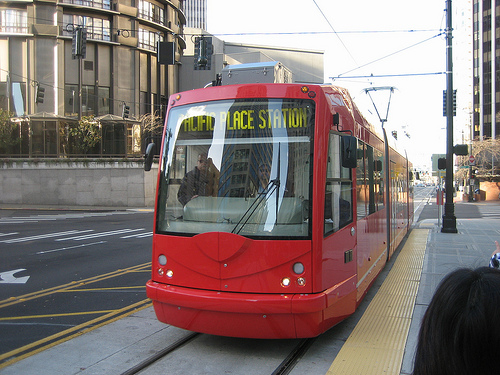
The Seattle Streetcar, whose South Lake Union starter line opened in 2007, has its share of oddities. Though Seattle’s streetcars are operated by Metro, they are funded and planned by the City of Seattle, which chose to set the adult fare at $2.50. That fare choice meant that ridership was actually discouraged during off-peak hours, when nearby buses serving the area are cheaper (the adult Metro fare is $2.25 off-peak). Even stranger: until recently, ORCA cards were accepted as ‘flash passes’ on the streetcar. This created a disproportionate incentive for ORCA cardholders to ride the streetcar, while doing nothing for tourists (who often don’t have ORCA cards) or low-income persons (who often can’t afford one).
While not the only reason, you could easily see such choices by Seattle as contributors to the Seattle Streetcar’s poor ridership. The good news is that SDOT’s new Transit Division has proposed realigning Seattle Streetcar’s fare structure ahead of the First Hill line’s opening later this year. Instead of charging Metro’s peak 1-zone fare, the new structure aims to harmonize with Link Light Rail. Adults will pay $2.25, equivalent to Link’s base fare. Just like Link, Seattle Streetcar will also participate in the new low-income fare program, charging those riders $1.25 $1.50. Finally, a new $5 day pass will be available, though it will only be honored on streetcars. The day pass will be $4.50 for adults, $3 for youth, and $2 for seniors and disabled persons.
Riders will be able to use ORCA cards to transfer for free between the streetcar and other services*, thanks to the installation of validators at all streetcar stops. SDOT will also be upgrading the existing ticket vending machines at streetcar stops to newer models based on their new parking pay stations, which feature faster processing times and a less confusing interface, and which will support the new day passes.
These proposed changes are excellent and long overdue. Charging more for streetcars over buses has never made much sense, given the Seattle Streetcar network’s lack of dedicated right-of-way and short length; synchronizing fares with Link fixes that problem. Meanwhile, the new low-income fare will open up the streetcars to a new group of riders. This is a particularly welcome move with the opening of the new First Hill line, going right by Yesler Terrace (one of the largest affordable housing redevelopment projects in the country), the International District, and First Hill’s medical services. The new day pass is intriguing as well, but ultimately highlights just how badly a 1-day PugetPass is needed on ORCA cards.
SDOT is accepting public comment on the proposed changes at their website, and will hold a public meeting on the proposed changes on February 2nd in room L280 at City Hall.
*If the fare for the second service is equal or lower. If the second service has a higher fare, they will be charged the incremental different when they transfer.
UPDATE: This article has been corrected since publication.
Will became inexplicably interested in city planning, design, and urbanism after growing up in mostly-suburban Ohio. After spending 5 years living in Seattle's Rainier Valley, he relocated to San Francisco's Tenderloin neighborhood along with his wife and cat.



